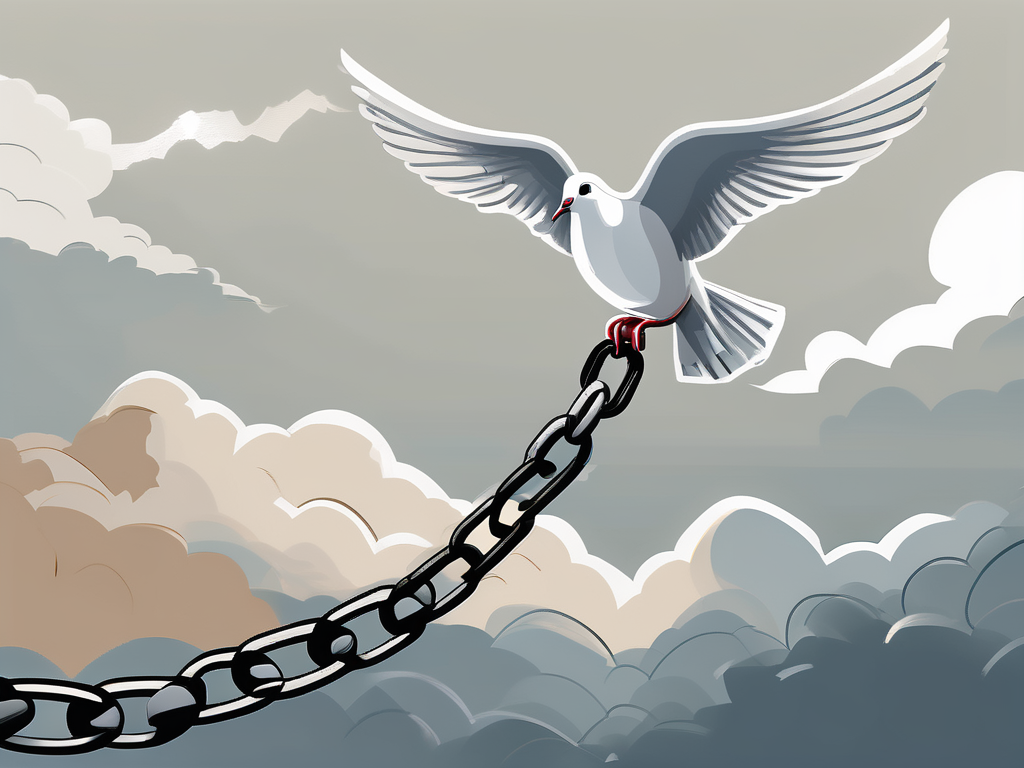Buddhism is often associated with peace, enlightenment, and nonviolence. It is a religion that preaches compassion, kindness, and the pursuit of inner harmony. However, like any other religion or belief system, Buddhism has not been immune to instances of violence and conflict throughout its history. In this comprehensive overview, we will delve into the complex relationship between Buddhism and violence, exploring its origins, manifestations, and impact on society.
Understanding the Concept of Violence in Buddhism
Before we delve into the instances of Buddhist violence throughout history, it is important to understand the concept of violence within the context of Buddhism. Buddhism promotes non-harming and the cultivation of compassion towards all living beings. However, it also recognizes that the world we live in is not perfect, and that violence can sometimes arise as a result of various factors.
From a Buddhist perspective, violence is seen as an unfortunate consequence of ignorance, attachment, and delusion. It is viewed as a manifestation of one’s uncontrolled emotions and a deviation from the path of peace and enlightenment. Buddhists strive to overcome these negative tendencies and cultivate qualities such as wisdom, compassion, and patience.
Within Buddhism, violence is generally condemned as it goes against the core teachings of non-harming and respect for all life. The first precept in Buddhism is to refrain from harming or taking the life of any living being. This precept is observed by monks, nuns, and devout practitioners, as it is believed to contribute to the development of a more peaceful and compassionate society.
However, it is important to note that Buddhism recognizes that individuals may sometimes find themselves in situations where violence becomes inevitable in order to protect oneself or others. The moral ambiguity surrounding self-defense or defense of others has been a topic of debate within Buddhist philosophy.
One of the perplexing aspects of Buddhist violence is the contradiction between its core teachings of nonviolence and the historical instances where Buddhists have been involved in conflicts. This paradox raises questions about the adaptability of Buddhism to changing circumstances and the complexities of human behavior.
Within the Buddhist tradition, violence is often seen as a consequence of ignorance and delusion, rather than a direct result of religious teachings. It is important to differentiate between the actions of individuals or groups that claim to be acting in the name of Buddhism and the teachings of the religion itself.
Despite the general condemnation of violence in Buddhism, there have been instances throughout history where Buddhists have been involved in acts of violence. One such example is the case of the Japanese Buddhist warrior monks known as the “sōhei” during the medieval period. These warrior monks were known for their martial skills and involvement in armed conflicts.
The sōhei emerged during a time of political instability in Japan, where different factions vied for power. In order to protect their temples and the Buddhist faith, these warrior monks took up arms and engaged in battles. While their actions may seem contradictory to Buddhist teachings, it is important to understand the historical context in which they operated.
Another example of Buddhist violence can be found in the history of Tibet. In the 8th century, the Tibetan Empire was established under the rule of King Trisong Detsen. During this time, Buddhism was introduced to Tibet and became the dominant religion. However, conflicts arose between the Tibetan Empire and neighboring kingdoms, leading to military campaigns and the use of violence.
It is important to note that these instances of Buddhist violence do not represent the entirety of the religion or its teachings. Buddhism is a diverse and complex tradition with various interpretations and practices. The actions of individuals or groups should not be used to generalize the entire religion.
In conclusion, while Buddhism promotes non-harming and the cultivation of compassion, there have been historical instances where Buddhists have been involved in acts of violence. These instances raise questions about the adaptability of Buddhism and the complexities of human behavior. It is important to differentiate between the actions of individuals or groups and the teachings of the religion itself.
Early Instances of Buddhist Violence
Violent incidents involving Buddhists can be traced back to the early days of the religion. Ancient Buddhist texts, such as the Jataka tales, which recount the previous lives of Buddha, depict instances of violence. These stories serve as cautionary tales, illustrating the consequences of negative actions and the importance of cultivating virtuous qualities.
However, it is important to note that these instances of violence in ancient Buddhist texts should not be taken as a reflection of the core teachings of Buddhism. Buddhism, at its essence, promotes nonviolence and compassion towards all sentient beings. The inclusion of violence in these texts can be attributed to the diverse cultural and historical contexts in which they were developed.
Historically, Buddhist communities have also found themselves caught in the midst of conflicts and wars. While the religion itself may emphasize nonviolence, the actions of individuals or groups cannot always be attributed solely to their religious beliefs. Historical circumstances, political factors, and power struggles have often played a significant role in the involvement of Buddhists in violent conflicts.
Violence in Ancient Buddhist Texts
The presence of violence in ancient Buddhist texts can be attributed to the diverse cultural and historical contexts in which these stories were developed. They serve as moral teachings, illustrating the importance of virtuous conduct and the consequences of harmful actions. These texts also highlight the fallibility of human nature and the various challenges individuals may face on their spiritual journey.
For example, in the Jataka tales, there are instances where the Buddha, in his previous lives, had to resort to violence in order to protect the innocent or uphold justice. These stories aim to convey the message that violence should only be used as a last resort and that nonviolence should always be the preferred path.
It is crucial to approach these texts with a critical eye, considering the cultural and historical specificities and recognizing that they are not meant to be prescriptive but rather reflective of the human condition. They provide valuable insights into the complexities of human nature and the challenges faced in the pursuit of spiritual growth.
Historical Conflicts and Buddhist Involvement
Throughout history, Buddhist communities have found themselves entangled in conflicts and wars. This involvement can be attributed to a variety of factors, including territorial disputes, political rivalries, and power struggles. Monarchies and ruling elites often sought the support of influential monastic institutions, thereby drawing Buddhist organizations into conflicts.
However, it is important to recognize that the involvement of Buddhists in historical conflicts does not reflect the teachings of Buddhism as a whole but rather the complex interplay of factors that shaped these specific historical contexts. Buddhism, as a religion, promotes peace, compassion, and the alleviation of suffering. The actions of individuals or groups should not be seen as representative of the entire Buddhist community.
Throughout history, there have been instances where Buddhist leaders and practitioners actively worked towards peace and reconciliation. For example, during the Vietnam War, the influential Buddhist monk Thich Nhat Hanh advocated for nonviolence and played a crucial role in promoting peace and understanding.
It is essential to recognize the multifaceted nature of Buddhism and avoid generalizations that may perpetuate stereotypes or misconceptions. While instances of Buddhist violence exist in history, they should be seen as exceptions rather than the norm, and they should not overshadow the core teachings of nonviolence and compassion that Buddhism espouses.
Buddhist Violence in the Medieval Era
The medieval era witnessed an evolution in the nature of Buddhist violence. Buddhism was often intertwined with political power, leading to the emergence of conflicts involving Buddhist institutions and practitioners.
During this time, Buddhism spread across various regions in Asia, taking root in different cultures and societies. As it gained popularity, Buddhist monasteries became centers of influence and power. Kings and rulers sought the guidance and support of these monastic institutions, recognizing the moral authority they held over the people.
The Role of Buddhism in Medieval Wars
In medieval Asia, Buddhism played a significant role in the conflicts that engulfed the region. Buddhist monasteries and their leaders often enjoyed close relationships with rulers and were sought after for their spiritual guidance and support. Consequently, monastic institutions became entangled in political intrigues and were occasionally mobilized to participate in wars.
These conflicts were not solely driven by religious differences but were also influenced by political ambitions, territorial disputes, and power struggles. Buddhist institutions, although rooted in teachings of peace and compassion, found themselves caught in the midst of these complex dynamics.
While the involvement of Buddhist institutions in conflicts raises ethical questions, it is important to consider the historical context and the political dynamics that shaped these events. The medieval era was a time of constant warfare and shifting alliances, where survival often depended on strategic alliances and military strength.
Buddhist Monastic Militarization
An intriguing phenomenon during the medieval era was the militarization of Buddhist monastic institutions. Some monasteries evolved into armed forces, engaging in territorial disputes and protecting their interests. This transformation challenged the traditional image of Buddhist monastics as peaceful practitioners seeking enlightenment.
The militarization of monastic institutions can be attributed to various factors. In some cases, it was a response to external threats and the need for self-defense. Monasteries, situated in strategic locations, became targets of invasion and pillaging. To safeguard their sacred spaces and protect their followers, some monastics took up arms and formed defensive forces.
However, it is essential to recognize that this militarization was not representative of Buddhism as a whole but rather a divergence from its core principles. Buddhism, at its essence, promotes nonviolence and inner transformation rather than the pursuit of power and dominance.
Despite the militarization of some monastic institutions, the majority of Buddhist practitioners remained committed to the teachings of peace, compassion, and enlightenment. They sought to cultivate inner harmony and spread the message of love and understanding.
The medieval era serves as a reminder that even religious institutions are not immune to the complexities of human society. It highlights the challenges faced by Buddhism as it navigated the turbulent waters of politics and power.
Buddhist Violence in the Modern World
Violent incidents involving Buddhists also persist in the modern era. While Buddhism is predominantly practiced as a peaceful religion, contemporary conflicts highlight the complexities of religious identity, nationalism, and political tensions that contribute to outbreaks of violence.
Contemporary Buddhist Conflicts
In recent times, clashes involving Buddhists have been observed in various parts of the world, such as Sri Lanka and Myanmar. These conflicts often stem from ethnic and religious tensions, exacerbated by political factors and socio-economic disparities. It is important to emphasize that these instances do not represent the entirety of Buddhist communities but rather the actions of specific individuals or groups.
The Role of Nationalism and Politics
Nationalism and politics have played a significant role in some instances of Buddhist violence. The intertwining of religious and national identity has led to the polarization of communities, inflaming tensions and fueling conflicts. The manipulation of religious sentiments for political gain further complicates the narrative surrounding Buddhist violence.
The Impact of Buddhist Violence on Society
The manifestation of violence within Buddhism has far-reaching consequences for both Buddhist communities and the global perception of the religion.
Repercussions on Buddhist Communities
Instances of Buddhist violence can have severe repercussions for the affected communities. They can lead to the displacement of individuals, destruction of cultural heritage, and exacerbation of ethnic and religious divisions. These conflicts create challenges for Buddhist leaders and practitioners who strive to uphold the values of peace and nonviolence.
Global Perception of Buddhism
The occurrence of Buddhist violence challenges the perception of Buddhism as a religion of peace and nonviolence. Media coverage and public discourse often focus on the violent incidents associated with Buddhism, leading to a skewed understanding of the religion. It is crucial to acknowledge that these instances do not define Buddhism as a whole and that there are diverse interpretations and practices within the religion.
In conclusion, the history of Buddhist violence reflects the complexities of human nature, the impact of historical circumstances, and the interplay between religion, politics, and social dynamics. While Buddhism inherently promotes nonviolence and compassion, instances of violence have occurred throughout its history. It is important to approach these instances with nuance, recognizing that they do not define the entirety of Buddhism, and understanding the multifaceted factors that contribute to their occurrence. By engaging in critical dialogue and promoting a deeper understanding of the religion, we can move towards a more comprehensive and accurate perception of Buddhism and its relationship with violence.












